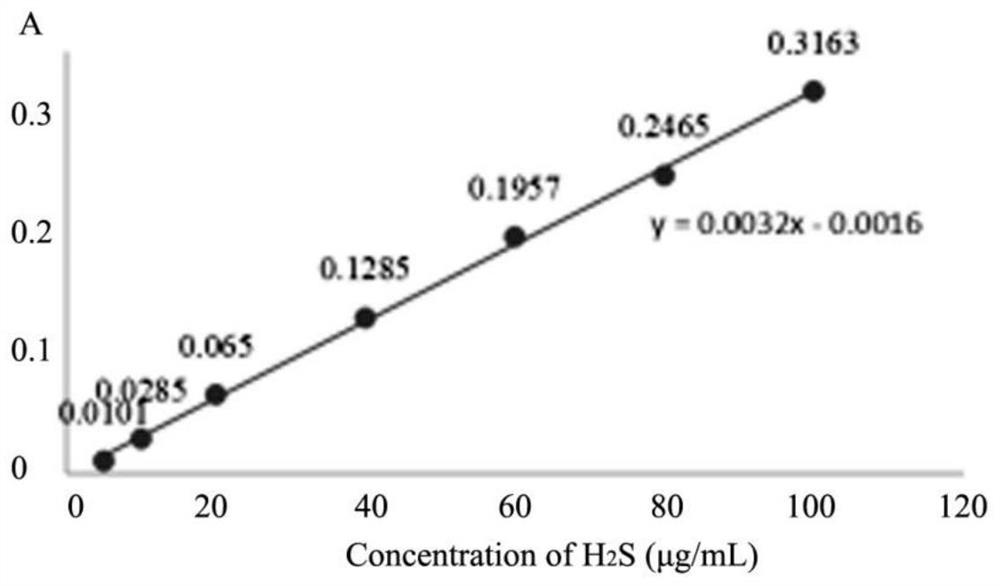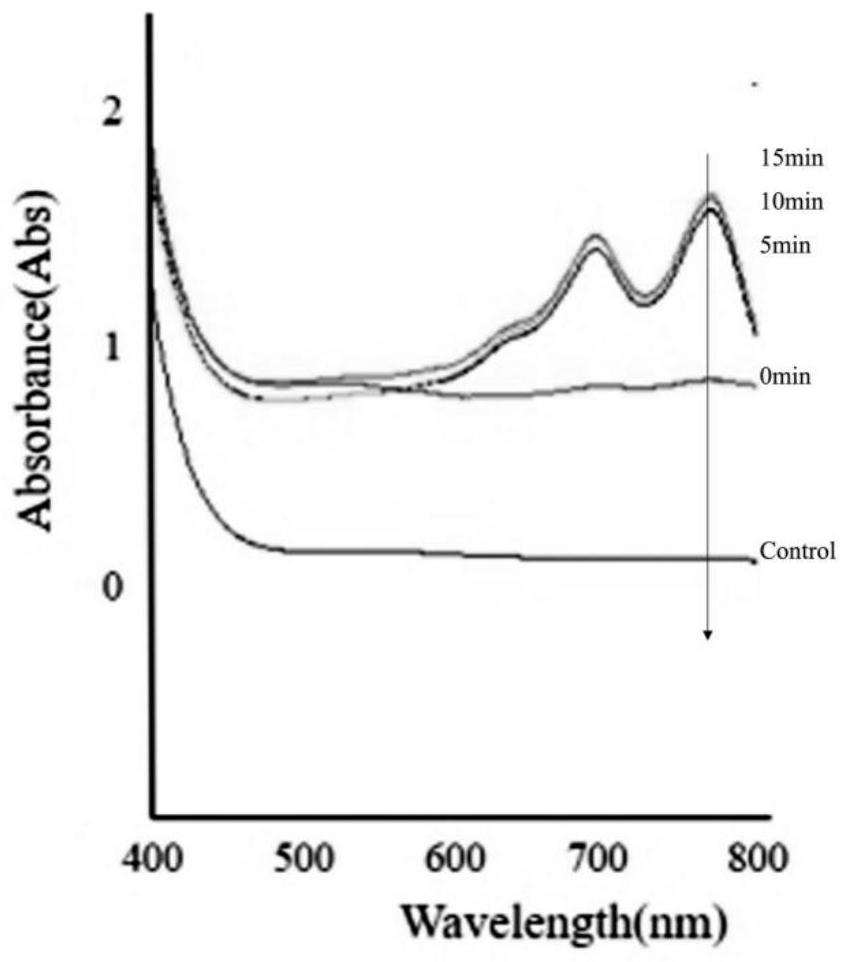A kind of preparation method of hydrogen sulfide sustained-release gel and its application in the preparation of diabetic skin ulcer treatment medicine
A slow-release gel and hydrogen sulfide technology, which is applied in drug combinations, skin diseases, medical preparations of non-active ingredients, etc., can solve the problems of uncontrollable release, lack of targets, fast oxidative release, etc., and achieve the goal of promoting wound healing Effect
- Summary
- Abstract
- Description
- Claims
- Application Information
AI Technical Summary
Problems solved by technology
Method used
Image
Examples
Embodiment 1
[0025] Determination of hydrogen sulfide content: 0.0412g NaHS 9H 2 O was dissolved in a 100mL measuring bottle, and 20mmol / L phosphate buffer solution (PBS) (pH=7.4) was added to prepare 10, 20, 40, 60, 80, 100mol / L NaHS standard solutions: mix 10, 20, 40, Add 80, 120, 160, 200μL 5mmol / L NaHS standard solutions into a 10mL measuring bottle, and use PBS to make up the volume to obtain NaHS standards with concentrations of 5, 10, 20, 20, 40, 60, 80, 100mol / L solution. Take 2 mL of each concentration gradient, add 400 μL of test solution A, 400 μL of test solution B, and 200 μL of test solution C, and let stand for 20 minutes. figure 1 for H 2 S assay standard curve, its linear range is 5-100μg / mL. Test Solution A: Contains FeCl 3 (30mmol / L) and HCl (1.2mol / L); test solution B: containing N,N-dimethyl-1,4-phenylenediamine sulfate (20mmol / L) and HCl (7.2mol / L); Test solution C: 1% (W / W) zinc acetate aqueous solution.
[0026] Diallyl trisulfide (DATS) reacts with glutathion...
Embodiment 2
[0028] Preparation of cyclodextrin (CD) inclusion complex of DATS DATS@CD: Diallyl trisulfide (DATS) (20%, W / W) diluted with absolute ethanol at room temperature, with a nitrogen-protected thermostat Magnetic stirring, 1×10 4 rpm, for 24 hours, slowly drop into CD (27%, W / W), the mixture was dried with nitrogen, and the inclusion powder was stored in a nitrogen-filled bag at -4°C.
[0029] Reaction of DATS@CD and GSH: Dissolve 0.0217g of DATS@CD and 0.0001g of GSH in 10mL of PBS, take samples at 5, 10, 15, 20, 25, 45 and 60min, and measure according to the method described in Example 1 h 2 S generated. result( image 3 ) shows that DATS@CD reacts with GSH to generate H 2 S is completed within 30min, and this process is slower than DATS and GSH, indicating that DATS@CD has more H than DATS 2 S sustained release ability.
Embodiment 3
[0031]Preparation of DATS@CD-sodium alginate gel: Swell sodium alginate in 5mL deionized water for 2 hours, stir to dissolve, add 0.0368g DATS@CD, mix well to obtain DATS@CD-sodium alginate gel. Wherein the content of sodium alginate is 1%-3% (W / W).
[0032] CaCl 2 - Preparation of chitosan gel: after swelling 25mg chitosan in 5mL of 2% acetic acid solution for 2h, stir well, add 0.0050g GSH and CaCl 2 Mix well, adjust the pH value to 6 with NaOH, and get CaCl 2 - chitosan gel; where CaCl 2 The concentration range is 0.5% to 1.5% (g / mL).
[0033] Dilute an equal volume of DATS@CD-sodium alginate gel with CaCl 2 - chitosan gel mixing, sampling at different time points in 5h, measure H according to the method of Example 1 2 S generation. The result is as Figure 4 shown. The results show that 0.5% ~ 1.5% of CaCl 2 And 1% to 3% sodium alginate concentration can maintain H within 5h 2 Slow release of S with 1.5% CaCl 2 and 3% sodium alginate have the best H 2 S sustain...
PUM
 Login to View More
Login to View More Abstract
Description
Claims
Application Information
 Login to View More
Login to View More - R&D
- Intellectual Property
- Life Sciences
- Materials
- Tech Scout
- Unparalleled Data Quality
- Higher Quality Content
- 60% Fewer Hallucinations
Browse by: Latest US Patents, China's latest patents, Technical Efficacy Thesaurus, Application Domain, Technology Topic, Popular Technical Reports.
© 2025 PatSnap. All rights reserved.Legal|Privacy policy|Modern Slavery Act Transparency Statement|Sitemap|About US| Contact US: help@patsnap.com



